The best thermal-imaging cameras in 2025
The best thermal-imaging cameras let you see the world in a whole new way and they're ideal for DIYers and contractors
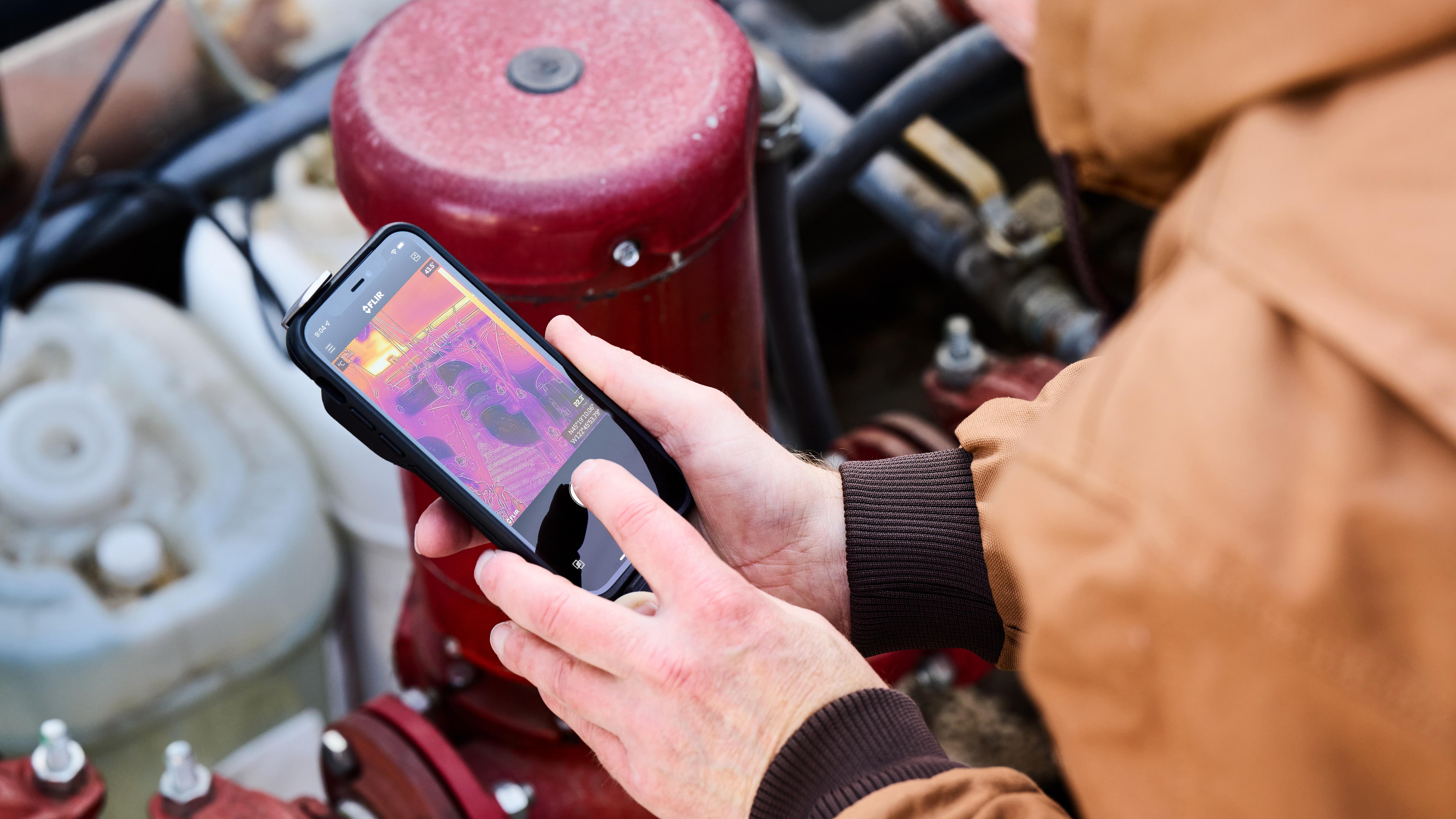
The best thermal imaging cameras allow you to explore the world in a whole new way. They let you see, measure, and capture temperature differences, accurately and from a safe distance.
Beyond the visible spectrum, there is an unseen world of heat radiation. Arty infrared film photographs aside, the practical uses of thermal imaging devices – also known as infrared thermal imagers – once belonged only to military and professional budgets.
Now anyone can access thermal imaging, whether you want to see heat sources in dark places – ideal for wildlife spotting – or identify where heat is being lost from your property to save on energy bills. If you simply want to measure temperatures, you may prefer our guide to the best infrared thermometers, but for HVAC, electronics, and plumbing these are now essential.
Find out more about how thermal imaging cameras work at the bottom of this guide. Below are the best thermal-imaging cameras you can buy right now, which I have either personally tested or sought expert advice and first-hand experience of.

With over 20 years of expertise as a tech journalist, Adam brings a wealth of knowledge across a number of product categories. As well as being a drone fan, he's a DIY enthusiast (whether his family likes it or not!) That means installing a lot of tech – he even wrote The Smart Smart Home Handbook on the subject.
The Quick List
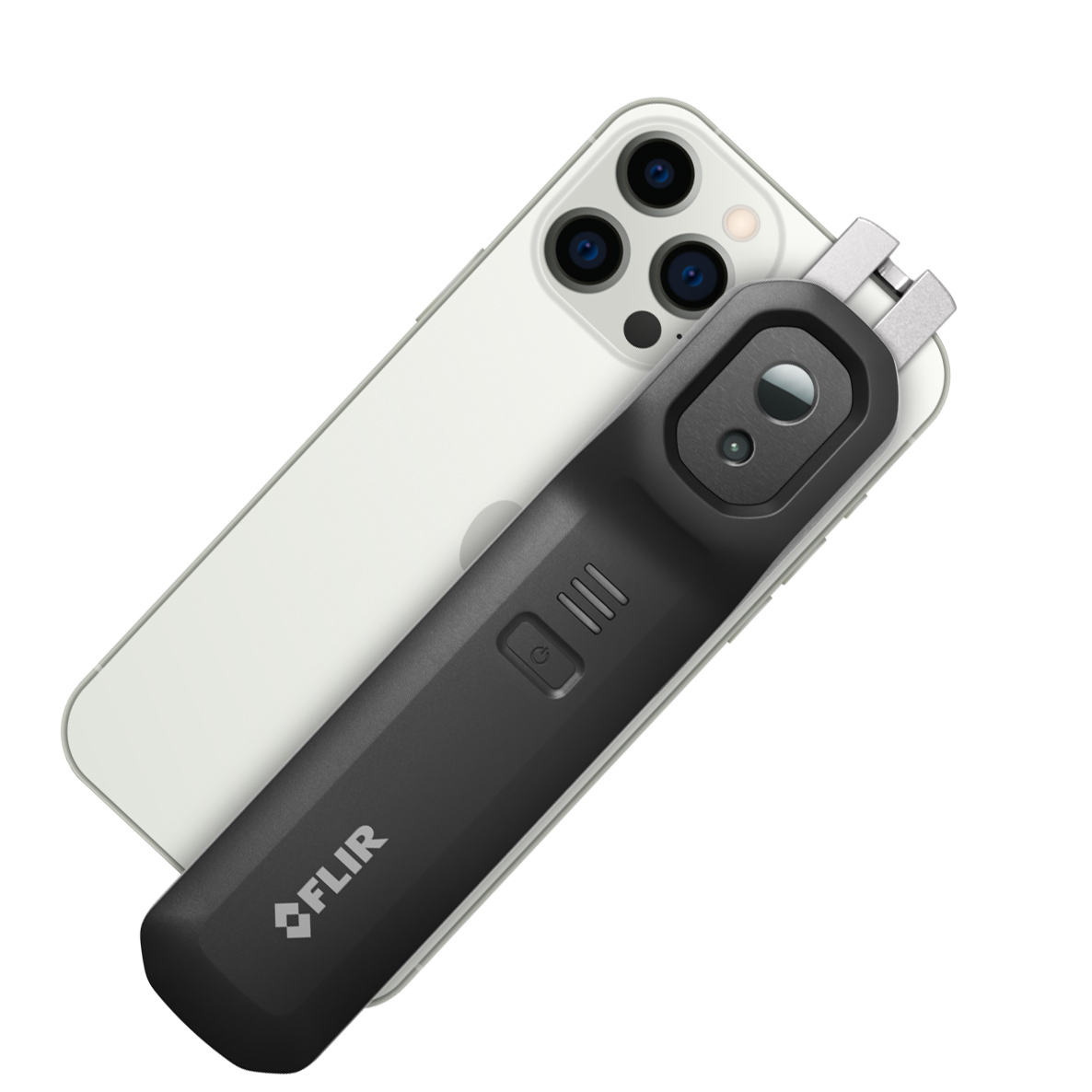
The latest and best thermal-imaging camera for phones has a wireless connection and a great app, plus a rugged build.
Read more below
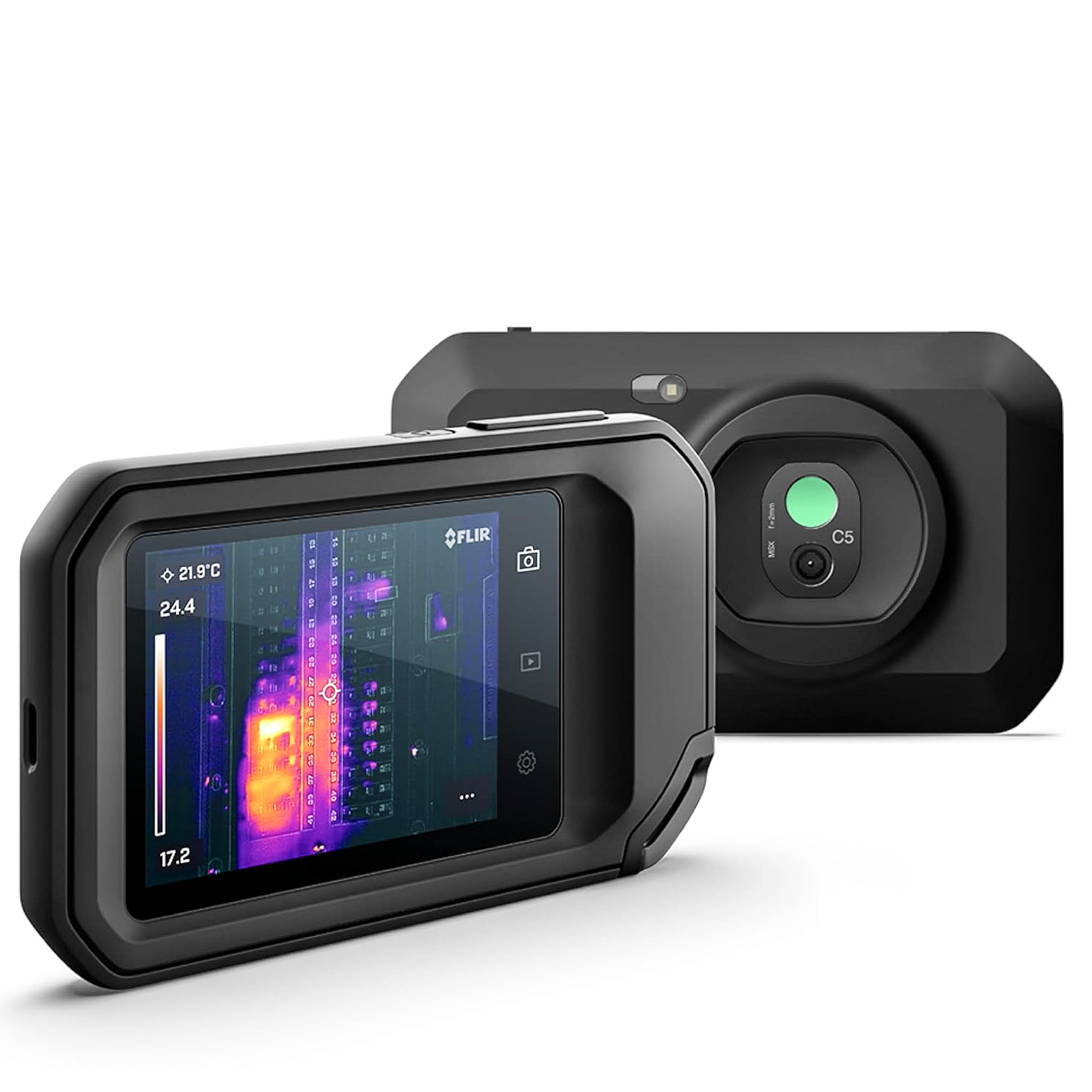
FLIR’s Cx-Series of thermal-imaging cameras has features for DIY and pro users, a built-in screen, and a rugged design.
Read more below
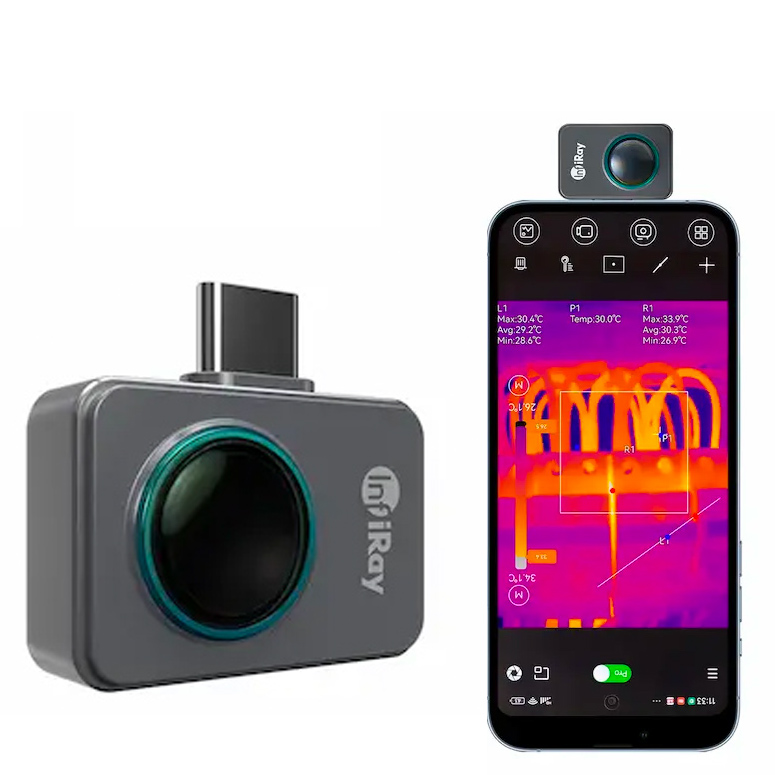
Tiny lightweight thermal camera which plugs into iPhone or USB-C android with detachable macro lens.
Read more below
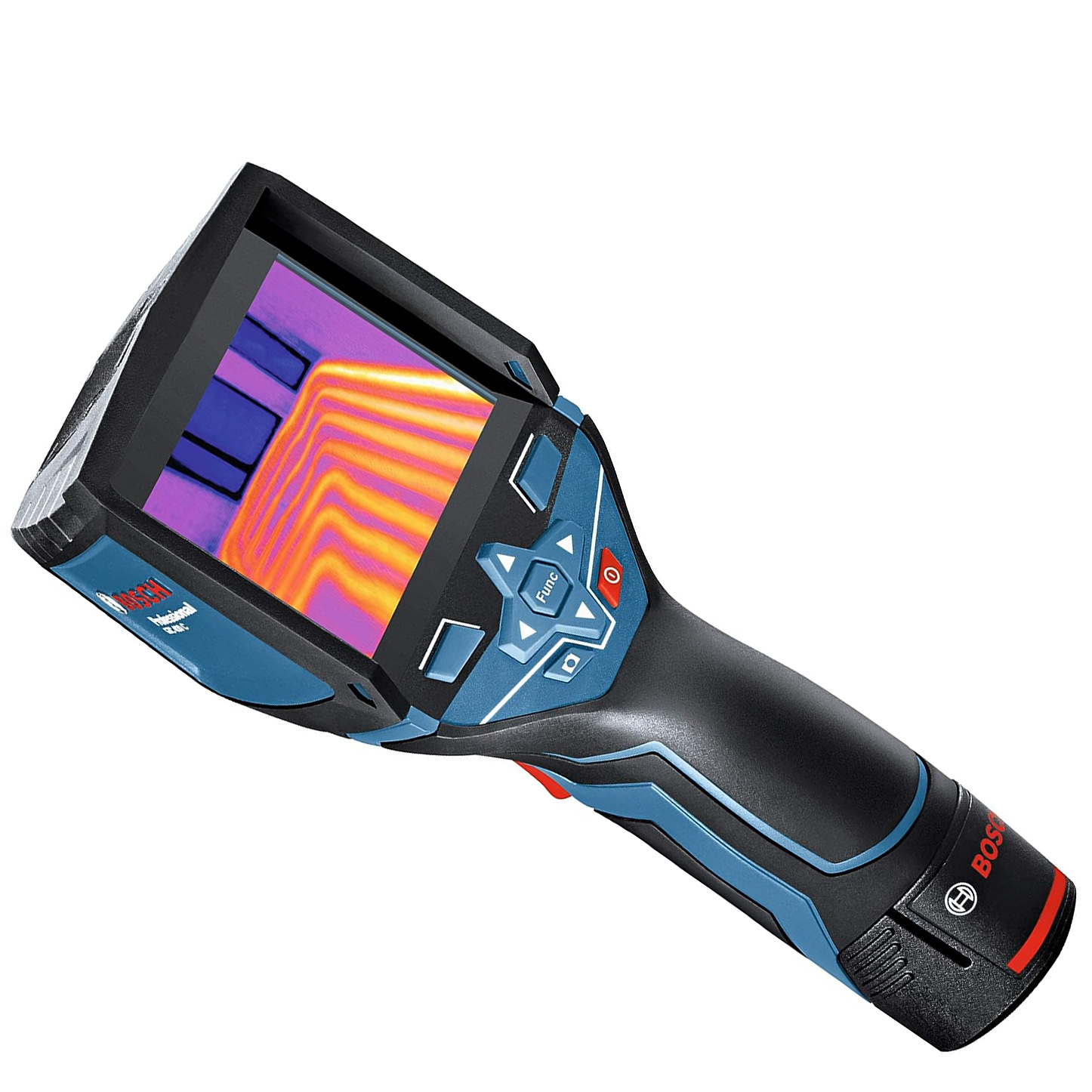
If you find yourself on a building site for more of your time this pistol-grip-style thermal imaging camera is the best pick for you.
Read more below
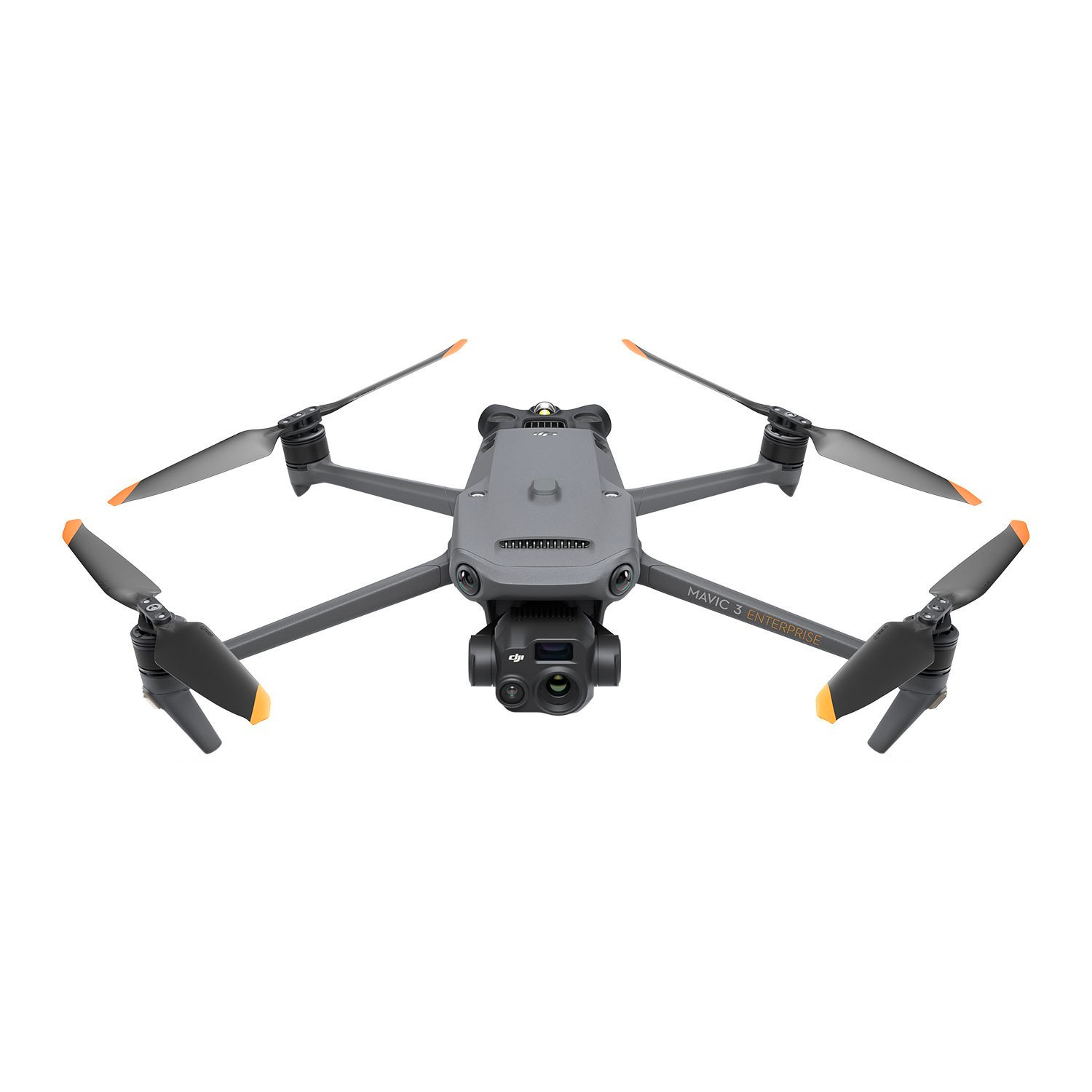
Catch a thief – or perform a search-and-rescue – from the air with a high-resolution (and reasonably affordable) thermal drone.
Read more below
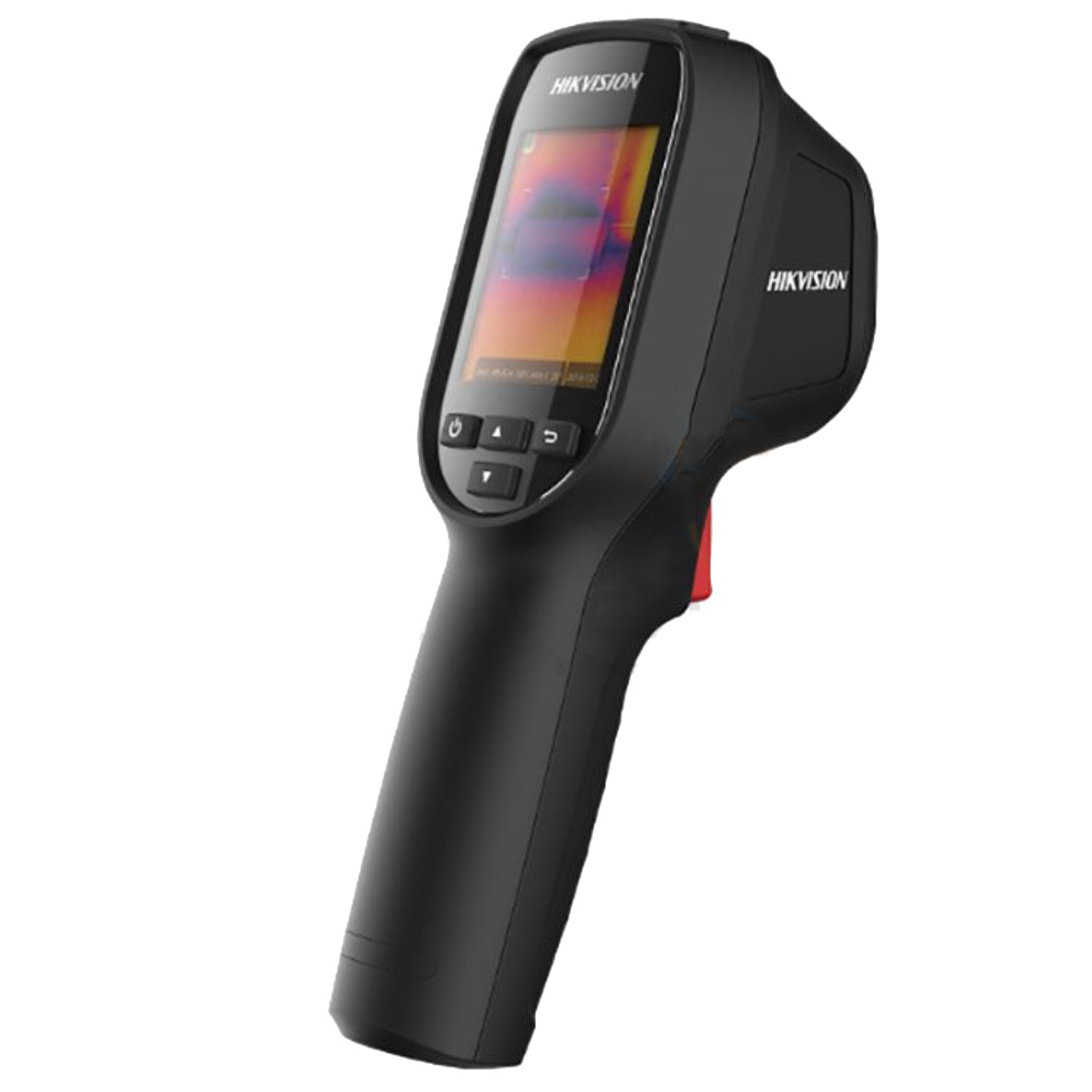
Not excessively priced, and with a laser to highlight the spot you're taking a measurement, this is all the thermal camera most folk ever need.
Read more below
View the full list ⤵
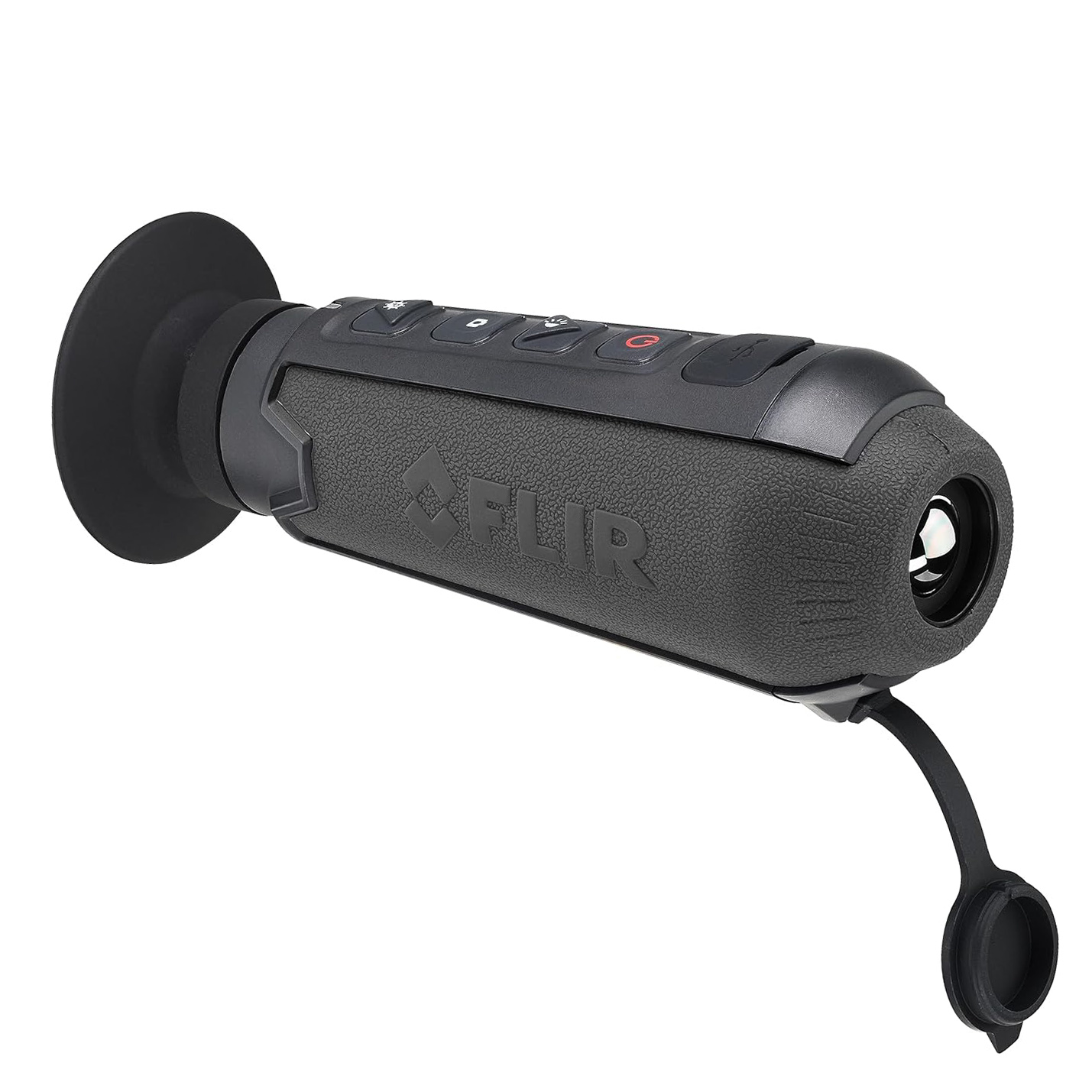
The Scout TKx can identify a person or a deer, for example, hiding at around 100 yards (90m) away, while being no harder to use than a traditional monocular.
Read more below
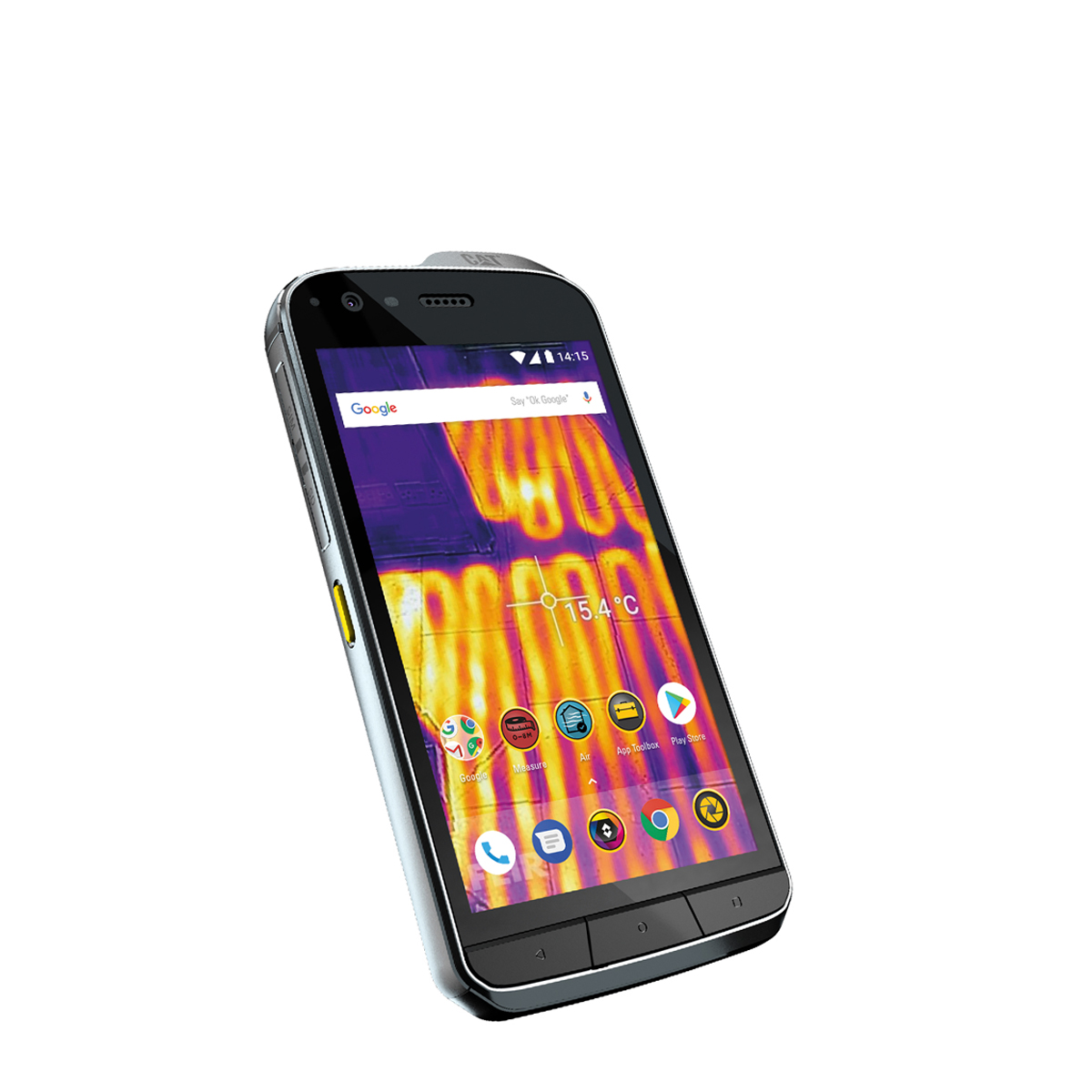
This tough, waterproof Android phone comes with some useful features you don't normally find on a phone – including a very capable thermal imaging camera built on the FLIR 3.5 sensor.
Read more below
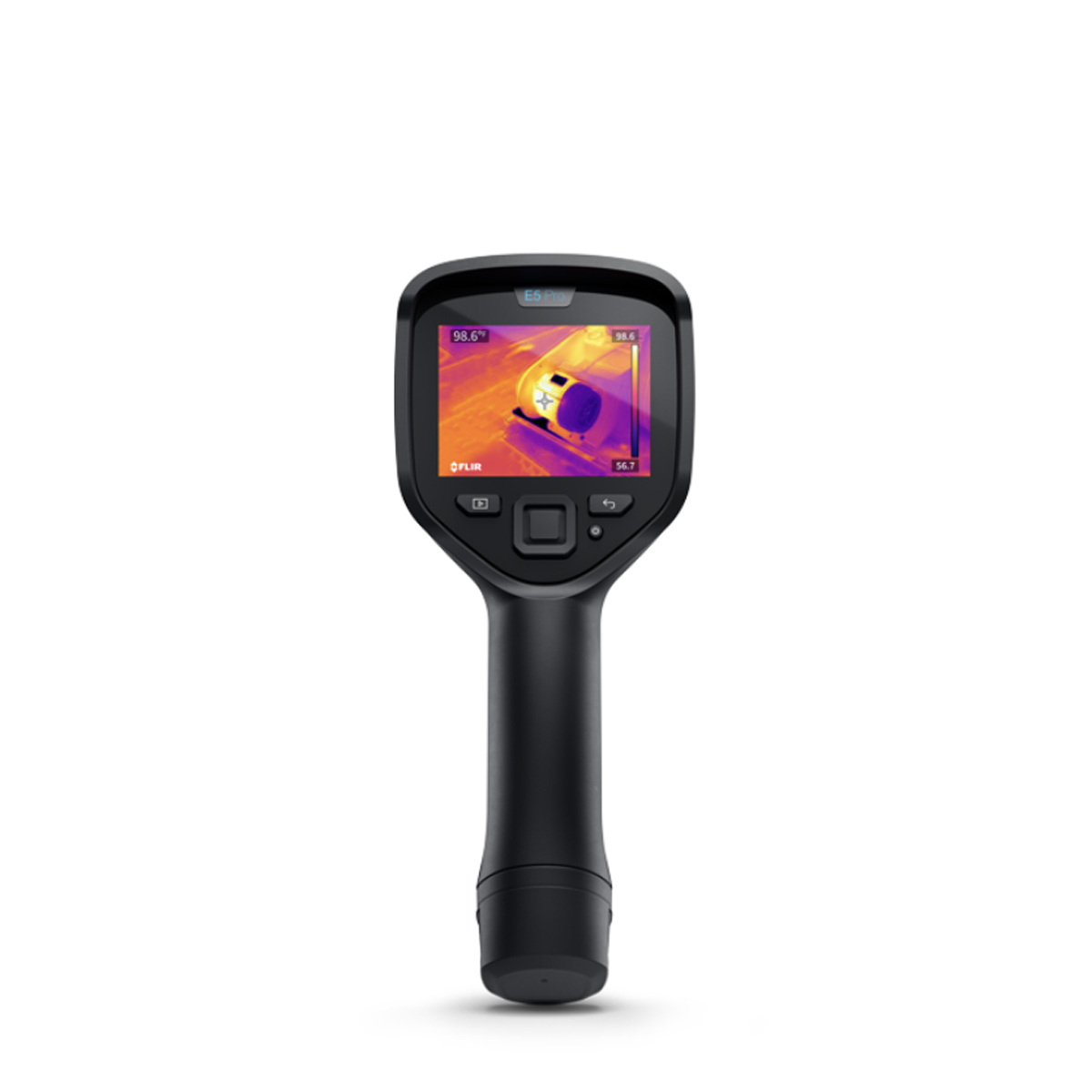
When you’re regularly working in demanding environments, the E5 and E8 (which doubles the thermal resolution of its sibling) represents the kind of reliability you need.
Read more below
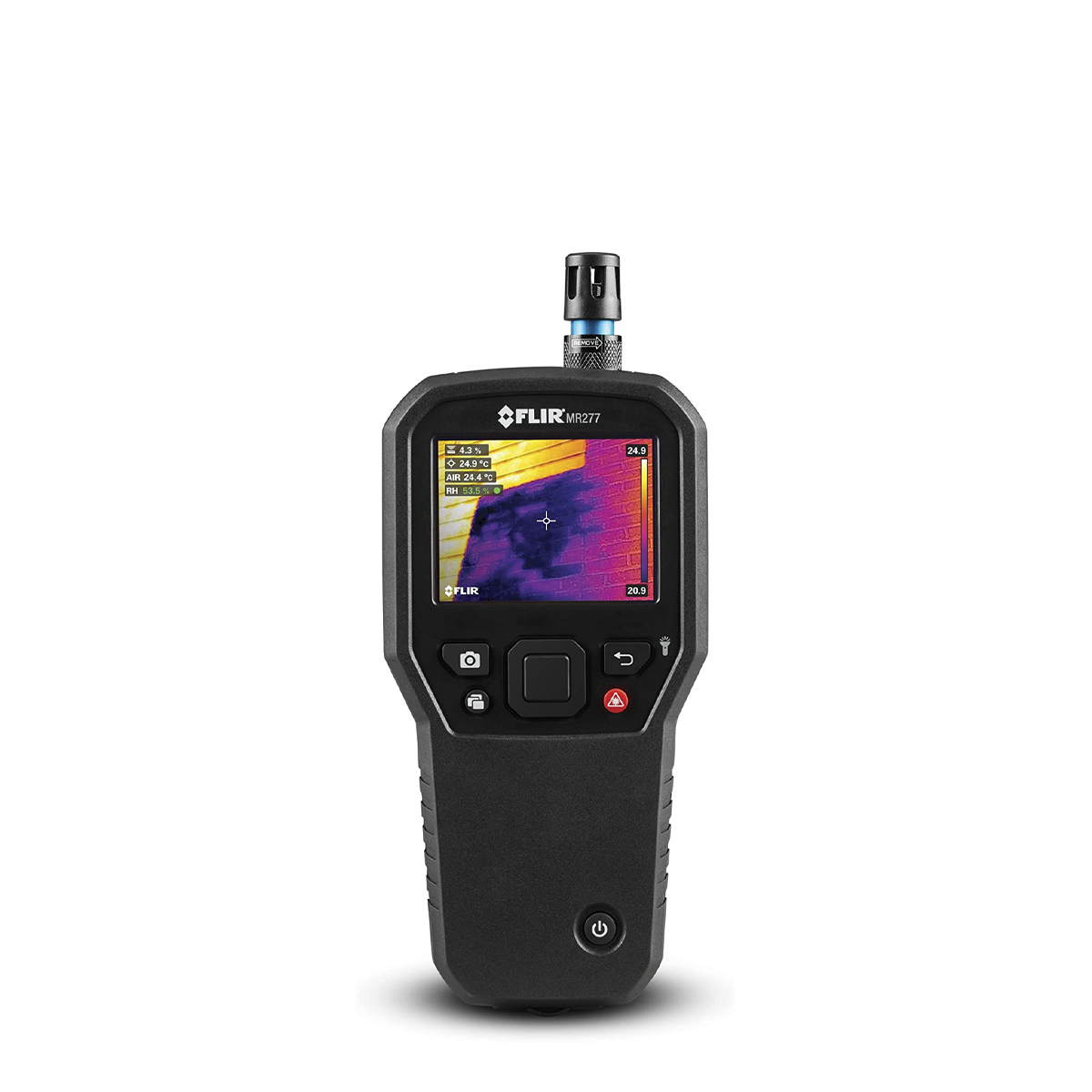
This is a pro device for surveyors, who well understand the benefits of combining a thermal camera and a hygrometer to test air humidity.
Read more below
Best thermal-imaging cameras
Why you can trust Digital Camera World
Best thermal-imaging camera overall
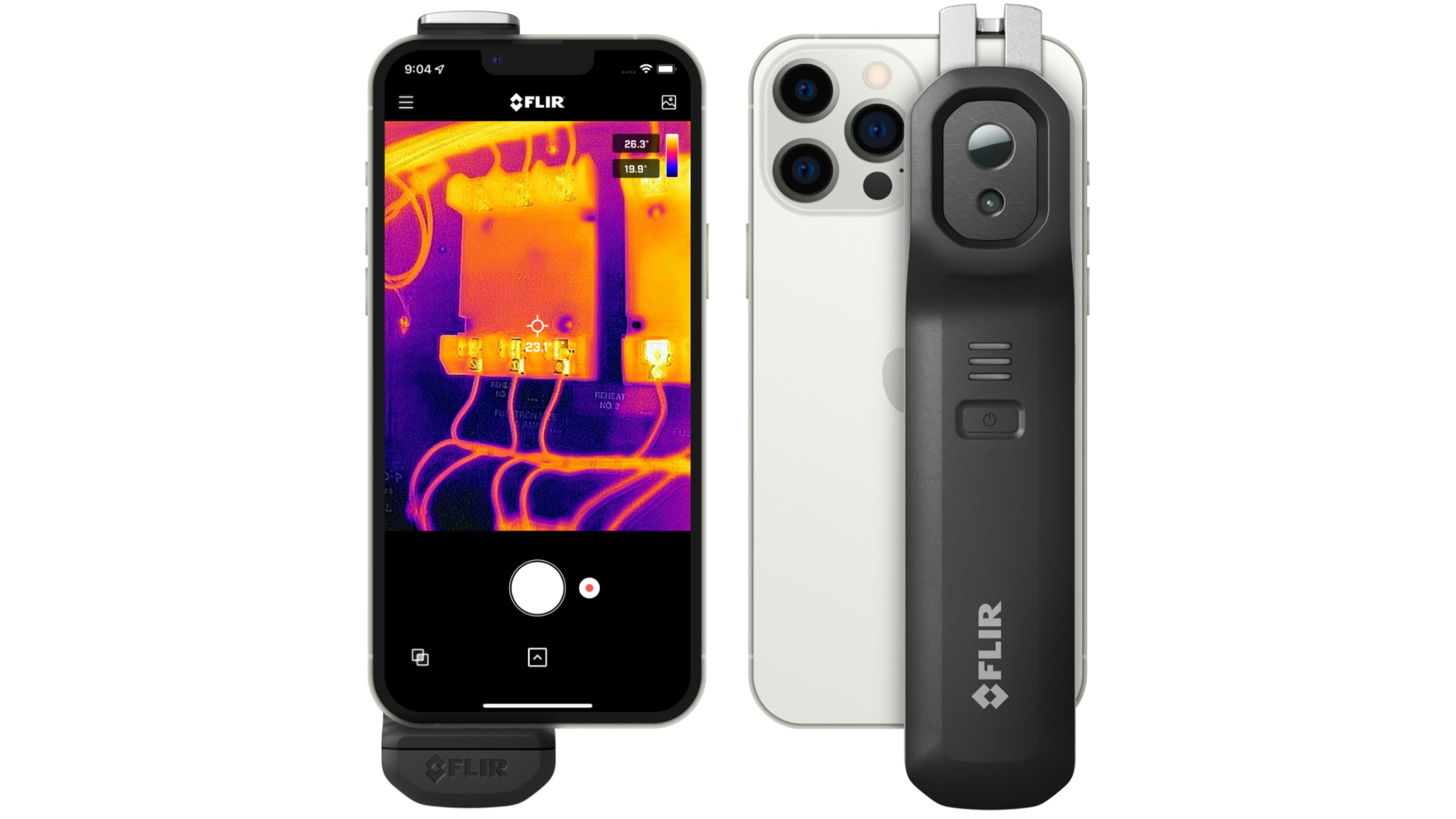
Specifications
Reasons to buy
Reasons to avoid
✅ You want phone integration: By using Wi-Fi this works with your phone but doesn't need a physical connection
✅ You want a rugged build: Despite the clamp, this is pretty solid
❌ You're looking for the best value: If you can be a bit more careful, there are cheaper phone attachments.
The FLIR ONE Edge Pro is a wireless thermal-visible camera for camera phones and iPads. It's designed with a spring-loaded clip, which allows different users (or companies with several workers) to attach the camera to both iOS and Android smartphones and tablets. Unlike previous FLIR thermal imaging models that plugged into the bottom of the phone, the ONE Edge Pro doesn't actually have to be connected at all – and can be used up to 30 meters (100ft) away with a Wi-Fi and Bluetooth connection; something I found very handy.
It is a compact, easy-to-use imaging device for builders, mechanisms, building inspectors and even homeowners who want to see how much heat their home is leaking! It's also IP54-rated, so while it can measure temperatures up to 400°C (752°F) and has a maximum 1.5-hour battery life, it's also reasonably rugged – not usually true of phone attachments.
Teledyne FLIR promises that it's easy to recognize where problems are located and identify targets, thanks to FLIR's MSX (Multi-Spectral Dynamic Imaging), 160 × 120 (19,200 pixels) thermal resolution and VividIR, which combines multiple image frames together to deliver a clearer image.
(The company also offers a budget version of this camera (no 'Pro' at the end of the name – but I've yet to review it personally).
My full review of the FLIR One Edge Pro with samples
Best rugged thermal-imaging camera
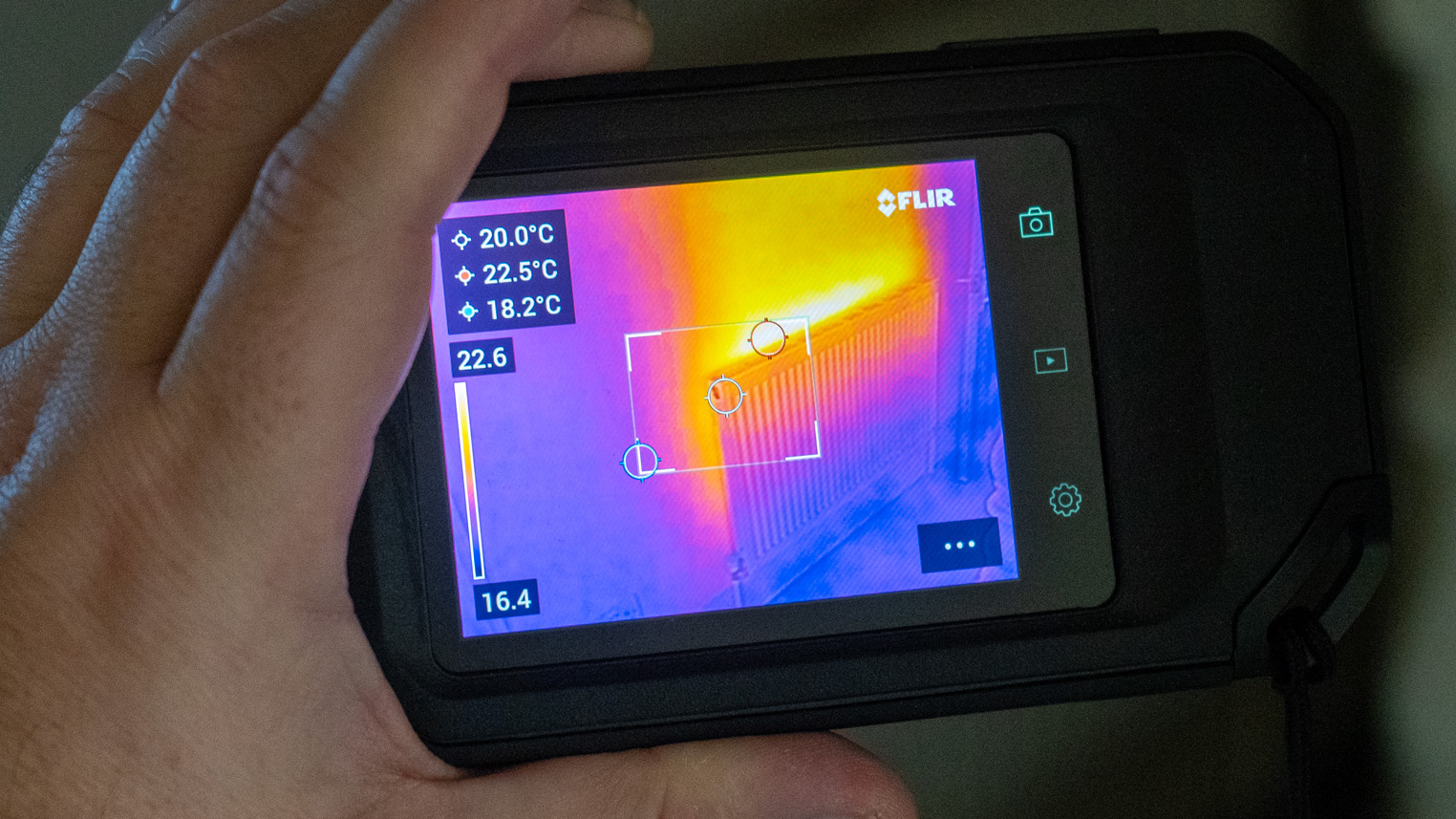
Specifications
Reasons to buy
Reasons to avoid
✅ You want a rugged device: The whole camera is reassuringly drop-proof.
✅ You want software integration: FLIR Tools lets you review the images retrospectively
❌ You're looking for modern connections: The C5 uses a Micro USB – old school.
The FLIR C3-X and FLIR C5 are good-looking compact thermal imagers that are well suited to DIYers and contractors. With a rugged body that’ll survive a bit of workplace rough-and-tumble, both have two cameras and a 5-megapixel optical lens. The IR maxes out at 160 x 120 on the pricier C5, allowing it to take advantage of Flir’s MSX technology. This patented method uses an edge-detection algorithm on the higher-resolution visual light image, overlaying this with the IR image to make the picture easier to comprehend.
Both versions have a 3-inch touchscreen and can store around 500 images onboard to transfer via Micro USB. The ability to type notes via a touch keyboard can be handy, too. If you can stretch to it, the FLIR C5 model adds more analysis features and Wi-Fi so you can get images to your phone and to your software.
FLIR’s analysis software, FLIR Tools, allows you to change the color palettes and take readings from 4,800 measurement points in the image files, a little like using the eyedropper in Photoshop.
Read my full FLIR C5 review for more details
Best compact thermal-imaging camera
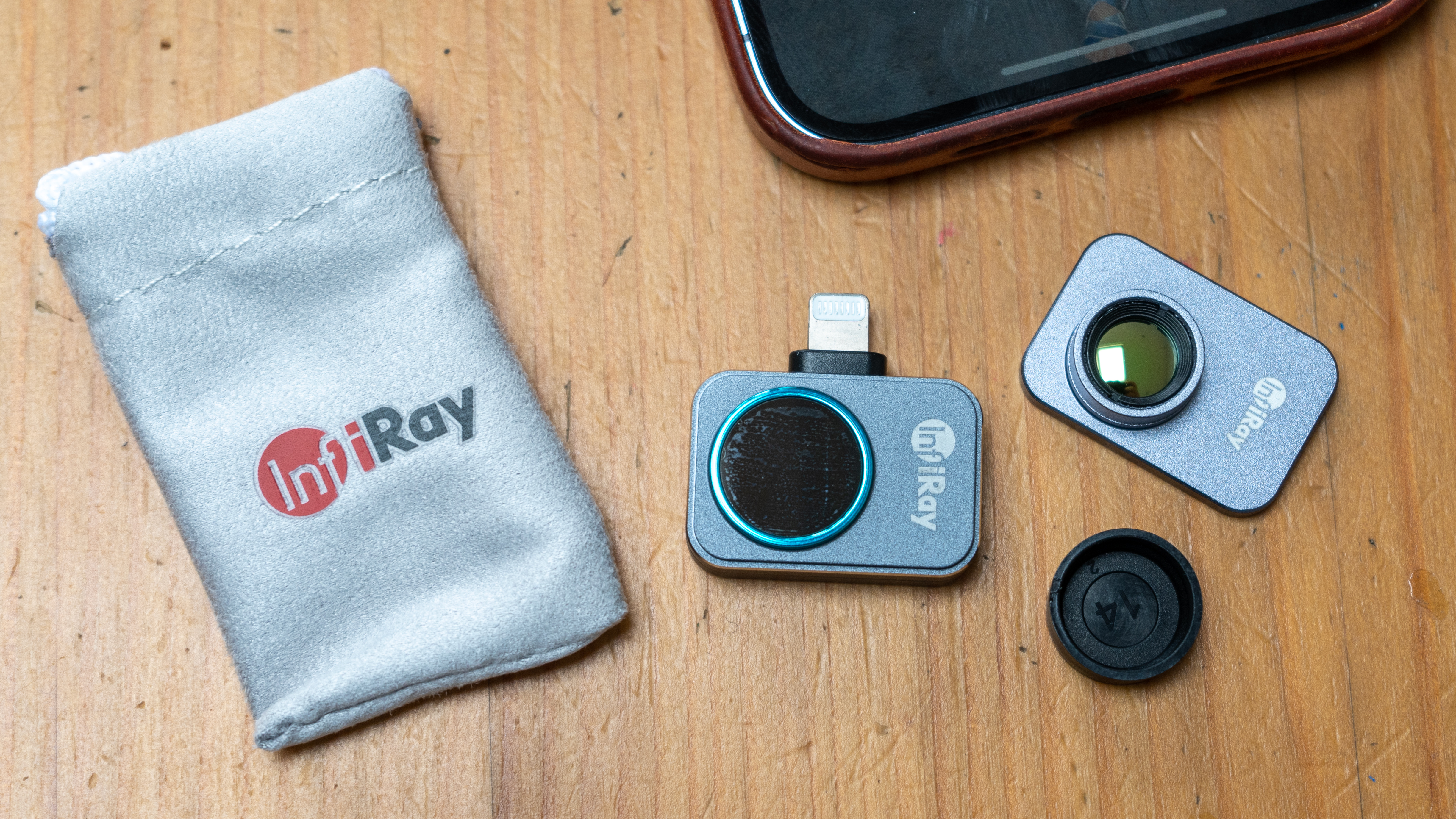
Specifications
Reasons to buy
Reasons to avoid
✅ You want something portable: The whole device is very small.
✅ You want a high refresh rate: 25Hz gives good quality video
❌ You're looking for a rugged device: The phone connector is, by nature, a little vulnerable.
❌ You have different phones: Because the lightning or USB-C port is built in, you can't easily switch between older iPhones and other handsets.
This amazingly compact device nevertheless beats more expensive alternatives in a number of ways. It only works when connected to a phone, and the connector – a lightning or USB-C plug – must be specified at purchase. But the app is good and offers a choice of easy or pro modes.
Another stroke of genius is the magnetically attachable macro lens, which is ideal for those examining circuit boards or other electronics, making this a very versatile tool. I worry that for some the connection might be delicate, but it is reversible (both USB-C and Lightning ports are on offer) and you can see the level of detail in which I tested the device against simple insulation, plumbing, and electronics situations.
Still, when trying this, I found it very handy, and the accessible price makes sense for occasional DIY use or – perhaps – getting a cheaper phone (one of the best burner smartphones) so you don't worry about dropping your daily driver into the engine you're working on!
Check my full InfiRay P2 Pro review
Best thermal-imaging camera for construction
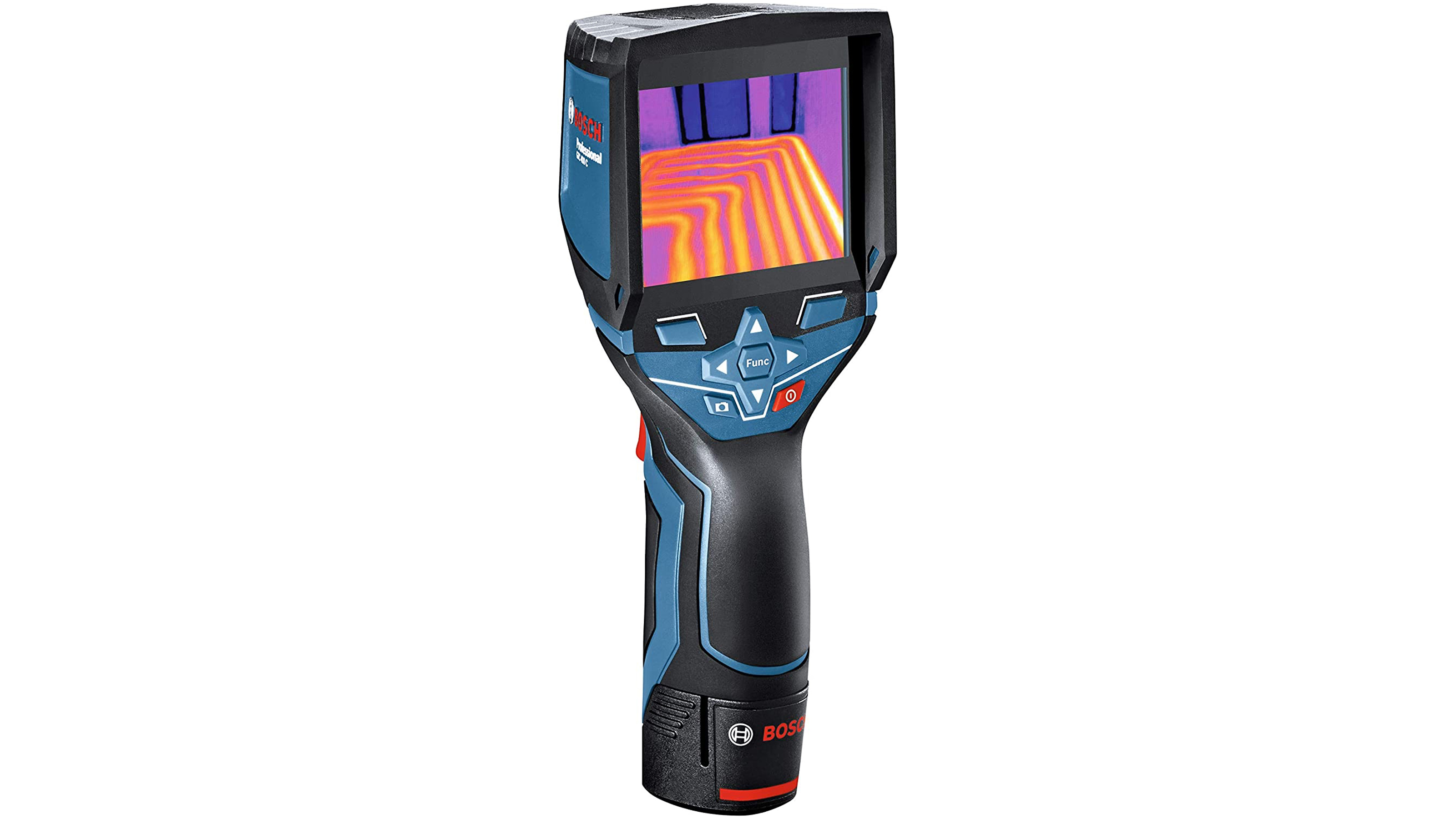
4. Bosch GTC400C
Specifications
Reasons to buy
Reasons to avoid
✅ You want connectivity: Wi-Fi and bluetooth means you'll be able to transfer your images.
✅ You want images in context: Optical images places the thermal ones in context.
❌ You're looking for maximum storage: 600 is great, but some manage more.
This thermal-imaging camera is easy to use in the workplace but fully equipped with Wi-Fi and Bluetooth to share data with a phone. Held with a pistol grip, the image can be frozen with a trigger and saved using the camera icon below the screen. The design, with a built-in lens cover and rubber guards to protect the 3.5-inch screen, is strong and IP53 dustproof.
The device includes a picture-in-picture context function, which places the thermal image in the centre of a frame with a visual image around the outside providing context. Also useful on-site is the lock feature which fixes the minimum and maximum temperature (like an exposure lock).
Bosch also provides a supporting app so you can transfer images beyond the 600 the device will hold. This is great for additional analysis and report creation, and the radiometric data is there for later analysis (but it’d still be nice to store more onboard).
Best thermal-imaging drone
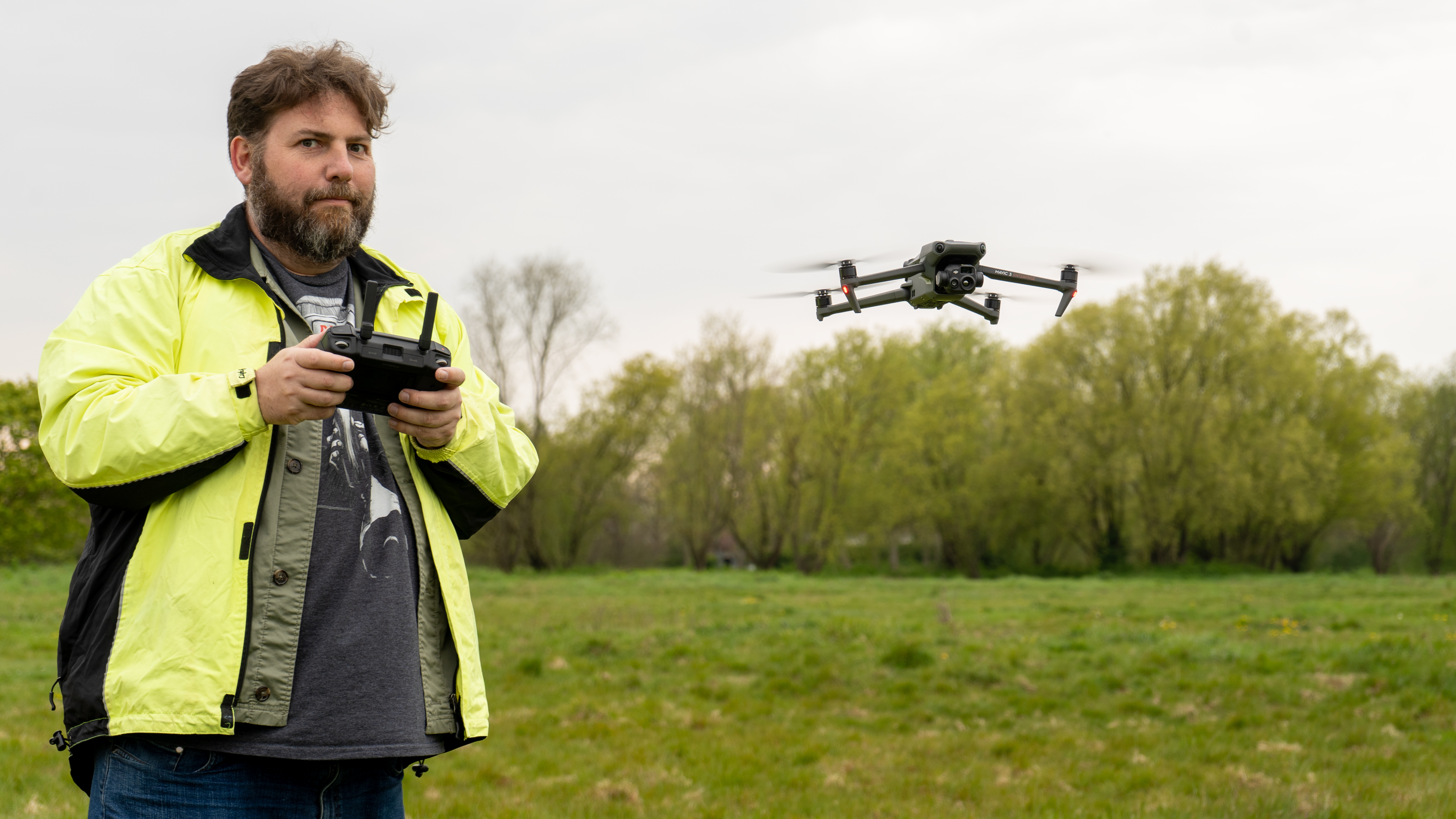
Specifications
Reasons to buy
Reasons to avoid
✅ You want integrated cameras: The drone has a 4K main camera, telephoto camera, and the thermal one.
✅ You want an easy setup: As far as pro drones go, DJI's software is right up there for usability.
❌ You don't want to register: Sadly no thermal camera drones exist under 250g. Yet.
❌ Matrice 4T is a difficult choice: The newer 'pro' drone from DJI seems to sit very close in price and specs – and has a longer battery life.
If you're looking for a thermal drone, then the Mavic 3T Enterprise is a great choice, combining good value and portability with a good quality camera block and software. I had a lot of fun testing the drone because – while I wasn't able to have a real search and rescue scenario – my family were able to try hiding from me and the drone's high-resolution thermal sensor made it difficult, while the telephoto optical one finished the deal.
A certain amount of training or practice is needed to get to grips with this device compared to the most basic consumer drones, and some US government agencies aren't allowed to buy DJI, but if you're able to get in the air you get side-by-side thermal video next to optical.
The thermal video is 30Hz, too, which makes it easy to locate people or wildlife – as well, of course, as survey buildings for inefficient thermal properties. Price-wise the Enterprise series isn't cheap, but the controller is good quality too, and it is competitive with other brands like Autel while holding the edge on usability grounds.
(If you can't opt for DJI because of legal concerns – ironically the freedom to choose drones in the USA is somewhat curtailed for some jobs – then check our guide to the best non-DJI drones).
UPDATE: Although we're still waiting to review it, the Mavic 3T has effectively been replaced by the Matrice 4T as of an announcement in January 2024. You can see the device on the DJI store (but there might be some good deals on the cheaper – and more than adequate for most Mavic 3T for a while)
Check my full review of the Mavic 3T to see sample videos.
Best thermal-imaging camera for spot measurement
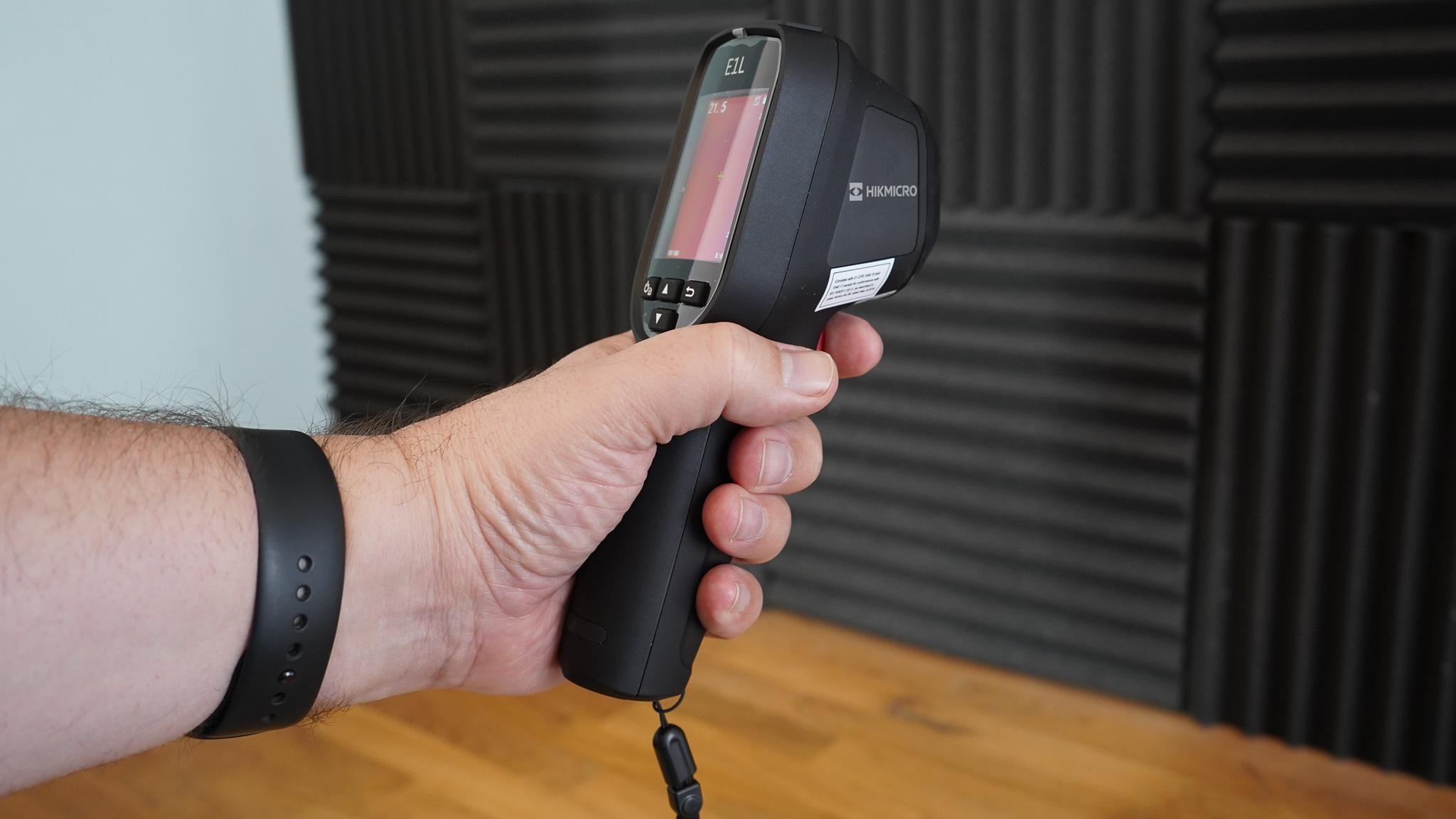
Specifications
Reasons to buy
Reasons to avoid
✅ You want sensible prices: By leaving out frivolous reporting tools, this keeps its price down.
✅ You want spot measurements: A laser pointer helps you take spot temperatures.
❌ You make a lot of reports: The lack of Wi-Fi feels a bit old-fashioned for busy surveyors.
Hikmicro's E1L shows a good, rugged workshop thermal camera – with a laser spot for taking targeted measurements – doesn't need to be excessively costly. When I tested it I found the simple trigger operation makes it well suited for straightforward work, while the 25Hz refresh rate is judder-free making it smooth to operate.
Officially IP54 rated, and convincing in the hand this felt like a good choice, especially as it comes in for a lower price than some competitors. I wouldn't choose this for its built-in software or if you need to make frequent reports that include visual images (there is no optical camera), but in a workshop or with clients where the work is more immediate and you need to see the issue and get the reading this is quick and feels good in the hand.
You can also store images to a memory card and copy to computer later, so those features are there – they simply aren't at the sophisticated level that FLIR's EX-series has reached (but that costs twice as much).
Check my full review of the Hikmicro E1L.
Best thermal-imaging camera for hunting
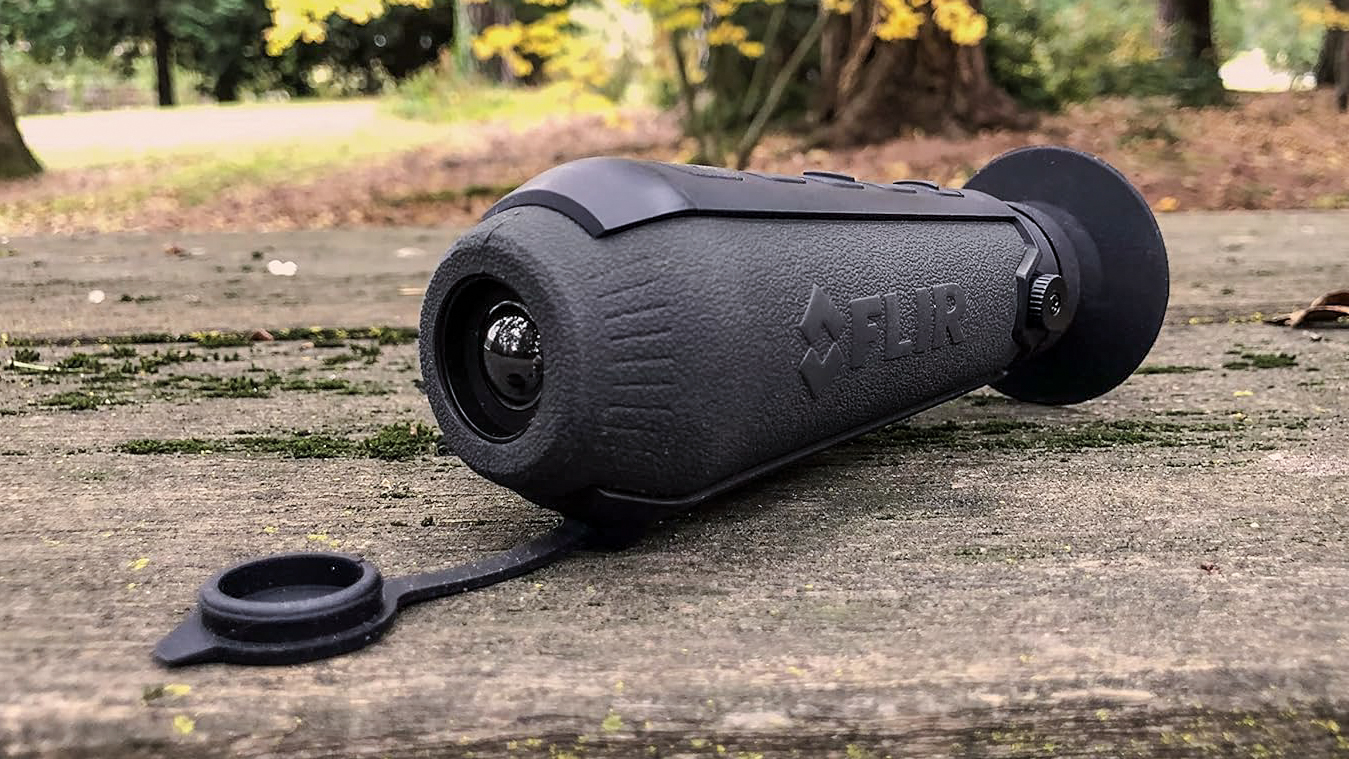
7. FLIR Scout TKx
Specifications
Reasons to buy
Reasons to avoid
✅ You want ease of use: Works just like a mini telescope or monocular
❌ You want very long range: The resolution limits range to a bit under 100m.
Combining a 160x120 pixel sensor with a 640 x 480 pixel LCD display means the Scout TK has the resolution and tech to identify a mammal – a person or a deer, say – hiding at around 100 yards (90m) away while being no harder to use than a traditional scope. That’s not a stunning level of detail, but without the scope your eyes might well not make out targets at a much shorter distance, especially in low light, giving this device a broad range of security and hobby uses.
If resolution, and, by extension, greater range, is a need, then you'll need deeper pockets – serious professionals can, after all, look for the 640 x 512 pixel FLIR Scout III but the price is around four times higher
The compact size and rechargeable battery boost the practicality; there will be no trouble fitting this into a decent coat pocket. The USB image download is convenient, and there's a cable included too, although no wireless transfer.
With a fixed field of view (20˚), the controls are not challenging: just brightness and the option to switch the color palette (White Hot, Black Hot, InstAlert, Graded Fire, Color Wheel and others). A single button handles recording, with a short press for a still and a long press for video. The 9Hz refresh rate is fast enough to make hand-holding practical.
Best thermal-imaging smartphone

Specifications
Reasons to buy
Reasons to avoid
✅ Super convenient: Camera, phone, and thermal camera all in one device.
✅ Nice styling: Elegant-looking styling for a handset with an antenna bulge.
❌ You want the latest Android: The handset has been around since mid to late 2020.
❌ You want long battery life: The battery is a relatively modest 4000mAh.
The CAT S62 Pro is designed to take serious abuse, with the construction that means that it can be dropped without having to worry about dents or cracking its Gorilla Glass 6 screen. With an IP68 rating, CAT phones can be submerged in 3m of water, too, without fear of ingress. And this industrial design also comes with some useful additional features that you don't find on a phone – including a very capable thermal imaging camera built on the FLIR 3.5 sensor (160 x 120).
This is useful because it reduces the things you need to carry and avoids any connecting with IR cameras via Bluetooth or cables. The phone, too, is a perfectly serviceable affair with a 660 Octo Core 2GHz CPU that will run your favorite apps and 6GB storage for them. Even if it may lack some of the refinements of the top camera phones, it has a 12MP Sony sensor, comes with Android 10, and supports the Android Enterprise feature set.
Note: The even older CAT S61 – which is getting harder to come by, but is still available in places – had a lower resolution IR camera, but also boasted laser measuring, so offering an alternative with even more flexibility.
Read our full review of the CATS62 Pro
Best pro handheld thermal-imaging camera

Specifications
Reasons to buy
Reasons to avoid
✅ You need a solid build: This is a very rugged device.
✅ You want a protected camera: There is a built in camera shield as well as a case supplied.
❌ You want a good optical camera: The optical camera is disappointingly low res.
❌ The 'cheaper' version is still pricey: And you pay with lower resolution.
FLIR’s rugged E-series, of which the E8-XT is the top of the line, and I have reviewed the E5-XT, which has a similar build but half the thermal resolution. It offers the advantages of the company’s image enhancement, which merges visible light with the IR thermograph for easier-to-understand imagery. At this price, it seems a little unfair that the visible light camera is only 640x480, but in this context, it works well enough.
Of more concern to a working professional is the combination of Wi-Fi/Bluetooth and the FLIR Tools app, which enables timely delivery of your assessment, with imagery, to clients. This is well-realized, easy to operate, and can also be used, via screen recordings, to capture video from the camera.
When you’re regularly working in rough environments, the E8 represents the kind of reliability you need. The autofocus makes it easy to use and the lenses and 3-inch screen are well-shielded in a drop-proof IP54 enclosure. I must admit that I'd have hoped for more modern connectivity.
I have reviewed the E5-XT
Best thermal-imaging camera for leak detection

10. FLIR MR277 Moisture Meter
Specifications
Reasons to buy
Reasons to avoid
✅ You're measuring damp: Moisture meters are a specialised tool, but it's handy to combine them.
❌ You only need to measure temperature: As a specialised device, it'd be a waste of cash.
This is a pro device for surveyors, so the chances are you'll understand if you'll need it, but if you didn't know about it, isn't it useful to combine your thermal camera and a hygrometer to test air humidity? Yes (well, if you don't mind swapping the sensor in the field).
The benefits of MSX-enhanced IR imagery are clear in any scenario, but especially when you just want to get the job done. Here the extra contrast from the natural light camera combined with the detail (in line with FLIR’s patent) makes identifying moisture problems, air leaks, and insulation issues a relative breeze for anyone in the field.
The 8GB of internal memory will store up to 15,000 images, and their associated hygrometer readings and measurements from the laser measure, the beam of which is directed from a lens near the cameras.
How thermal-imaging cameras work
For the most part, the best thermal-imaging cameras work like regular ones, except that the image sensor detects invisible IR light and it is translated to a visual “thermogram”. This is what you see through the creature’s perspective views in The Predator and Prey.
Like visual cameras, these images are made of pixels but start at lower resolutions such as 80x60 pixels, or 0.003 megapixels. That sounds limited, but it's enough detail to pick out hotspots in wiring, for example.
See also Best thermal drones
Higher resolutions are always better, allowing you to work at a distance, which is especially important in security and rescue scenarios. Digitally overlaying the thermal image with a high-resolution, visible one can make understanding the picture easier, and many devices on this list do that. (There is a risk here – you need to be confident that the overlay is accurate, something I look at in individual reviews.)
The sensors are also of varying detail (150mK sensitivity means each pixel takes readings to the nearest 0.15˚C, so lower numbers are better). Meanwhile, refresh rates aren’t always high; 9Hz is typical, which is fine for locating hotspots, but not exactly cinematic.
Read more: Best indoor security cameras or Best outdoor security cameras
Thermal imaging works in the dark, or through smoke, but can be fooled by the reflectiveness (emissivity) of a surface. Because IR is part of the electromagnetic spectrum, like visible light, it also has similar properties when it encounters lenses or rain. For professional use, it pays to read up a bit on understanding thermograms, but you’ll understand the basics the moment you power on your thermal camera. Depending on the software, you can also take retrospective measurements from the thermal JPEGs.
How we test thermal-imaging cameras
I test thermal cameras by using them in day-to-day tasks like inspecting ventilation/insulation, heating equipment (radiators, boilers), plumbing (hot water pipes and taps), and electronics, including gaming devices. I am looking for detail in the image, and the extent to which any optical cameras align with the thermal camera. Latency (the speed of response) and accuracy are also significant issues I test.
We also test any special claims made by the manufacturer about individual products, as well as the overall experience. That means trying processes like downloading images, and what any apps are like (and testing whether they are secure).
Find out more about how we test and review on Digital Camera World
Get the Digital Camera World Newsletter
The best camera deals, reviews, product advice, and unmissable photography news, direct to your inbox!

With over 20 years of expertise as a tech journalist, Adam brings a wealth of knowledge across a vast number of product categories, including timelapse cameras, home security cameras, NVR cameras, photography books, webcams, 3D printers and 3D scanners, borescopes, radar detectors… and, above all, drones.
Adam is our resident expert on all aspects of camera drones and drone photography, from buying guides on the best choices for aerial photographers of all ability levels to the latest rules and regulations on piloting drones.
He is the author of a number of books including The Complete Guide to Drones, The Smart Smart Home Handbook, 101 Tips for DSLR Video and The Drone Pilot's Handbook.
